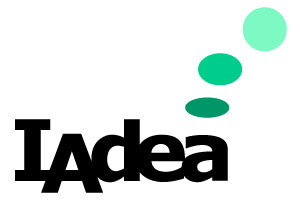
Did you finally get a task done you’ve been putting off? Get stressed out because there was no way to post a picture of your lunch online? Or did you just unknowingly sleep through it, only finding out the next day through numerous online news sources?
While the effects of a service outage on the common person like you or I may be negligible, for a tech giant such as Facebook the impact is far greater. MarketWatch recently pinned the cost at US$164,000 per minute — or roughly US$60 million for the full six hours — in lost revenue. This may be mere pocket change for the tech giant, but it certainly highlights what can be at stake, and the need for contingency planning for when the worst comes to the worst.
Keeping things operating smoothly is one thing all organizations share in common. As our workspaces and how we work becomes increasingly coupled with IoT technology to the point of being mission critical, the need to keep everything shipshape is essential. Device management is no exception to this rule, so how can organizations go about ‘downtime-proofing’ their devices and organizations?
Typical Misconceptions in Remote Device Management
Misconception 1: Centralizing administration of devices to one person to manage ensures there’s someone to keep everything functioning correctly.
Reality: For small amounts of devices this can make sense, but even then, organizations run the risk of devices going down while the administrator is unavailable, prolonging downtime until they return.
Solution: Role-based administration can allow the main administrator to nominate other people and grant access privileges and permissions. That means even when the main administrator is away, other people have access to a tool set adequate to troubleshoot and get devices back up and running.
Misconception 2: Centralized management means one person can take care of everything, no matter the time zone or responsibilities.
Reality: Networks grow increasingly complex: different devices in different time zones with different requirements can quickly overwhelm one person. Wires get crossed and things can go wrong when it is necessary to have feet on the ground nearby.
Solution: Building further on the benefits of role-based administration, administrators can delegate tasks to lower-level IT staff in local offices to take care of the day-to-day tasks. This takes work off the plate of the administrator to focus on other tasks, while also retaining the ability to override when necessary. The main admin can also grant and retract access privileges as needed to maintain greater security.
Misconception 3: A simple centralized RDM tool with all devices listed on a single screen is adequate enough for keeping track of all deployed devices.
Reality: Centralized management certainly is more convenient. But without some way to group devices together (by device type or location, for example) or create device filters, it’s easy to lose track of what’s where Firmware updates can be accidentally missed, device policies can become unstandardized, and devices can be forgotten about.
Solution: Device grouping and group policy management can allow admins to easily group devices of similar types, such as room booking panels, and then batch apply configuration and policy changes to ensure devices meet the latest organizational standards or protocols.
Misconception 4: Different administrators sharing an account to manage devices can help the budget.
Reality: Actually, they can! Provided nothing ever goes wrong ever again. Which is extremely unlikely. Someone could leave the administrator account logged in on a public computer, any of the users clicks a dodgy link in an email, the list goes on. Sooner or later, someone without authorization will access the account.
Solution: By enforcing each administrator has their own dedicated account with single sign on, much of the risk of weak passwords and password sharing is mitigated through enforced organizational regulations and as a result data is better protected. In the event of an intrusion, it also helps IT better find the source and quicky get systems resecured.
The Bottom Line
Enterprise-grade RDM offers to tools to manage vast networks of IoT devices. It smooths the way for IT administrators to get their job done and work as productively as possible. It also ensures mission-critical in-workplace IoT operates consistently and enables employees to get their job down with minimal down time.
'Downtime-proof' your organizations IoT devices
Learn more about IAdeaCare now
✔ Role-based admin to share management and improve resiliency
✔ Easily keep track of devices, wherever they are located
✔ Searchable changelogs for streamlined troubleshooting
✔ Enhanced security with SSO

